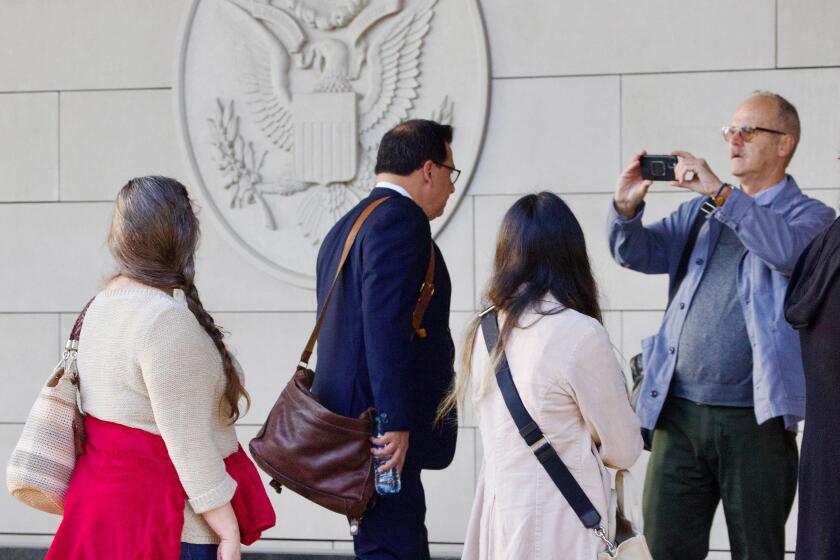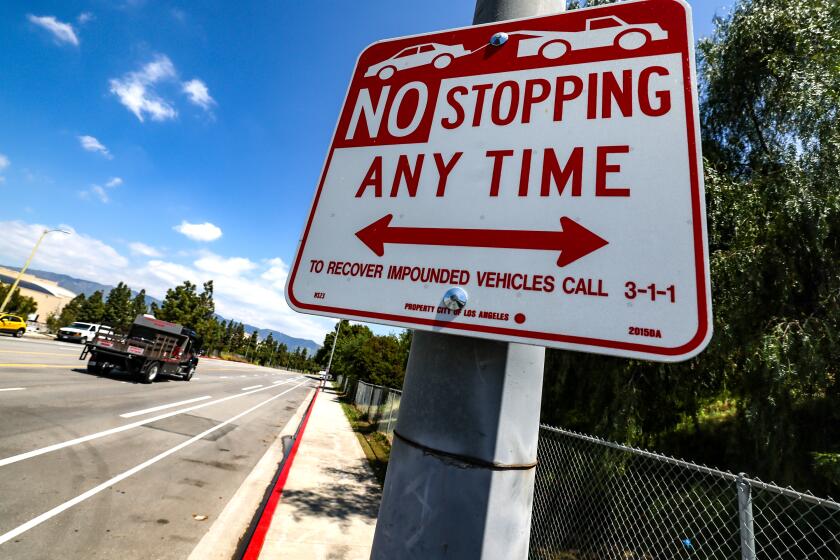Heroin Substitute : More Addicts Seeking Methadone Treatment
When county funding for all methadone programs in San Diego was halted after a controversy in 1978, many predicted that methadone users would be driven back to the streets in search of heroin.
In fact, just the opposite happened.
The number of people being treated with methadone increased from 600 when the service was being subsidized in 1978 to more than 1,100 in 1985--7% of the total number of estimated addicts in the county.
“What we found is that people were coming out of the subculture in droves once the service went private,” said Robert Kahn, who operates two of the five methadone clinics in San Diego. Until 1978, Kahn ran all of the clinics in the county as an employee of Teledyne Development Co., which operated under a contract from the county. Addicts admitted to the program, subsidized with public funds, paid $35 a week at the time.
But the county terminated the contract after an audit raised questions of possible conflicts of interest for Teledyne.
So when the clinics went private, Kahn, who holds a doctorate in clinical psychology, decided to go into business on his own.
“When it is a question of a public program, people who are engaging in an illicit activity are understandably reluctant to surface,” Kahn said. “Not only is the quality of service generally higher with a private program, but users tend to equate public institutions with the Department of Justice. They are afraid that their confidentiality will be jeopardized.” Today, those receiving methadone must pay $130 per month for the daily dose that they receive. Eighty percent of those on methadone maintenance are employed, according to Kahn.
To qualify for methadone maintenance--which is meant to be a substitute for heroin, and not a way to wean the addict from drugs altogether--users must be over 18 years old, demonstrate an addiction of at least two years, and have tried and failed to quit taking drugs at least twice.
Kahn said he is confident that the number of people being denied access for financial reasons is “minimal.”
“Compared to the cost of a habit, the cost of the program is peanuts,” he said.
Kahn, who operates methadone programs in seven states that serve 7,000 patients a day, sees drug replacement programs as the only large-scale solution to heroin addiction.
Dressed in a T-shirt and shorts, he spoke with passion and at breakneck speed about what he views as the ignorance of those who oppose methadone programs.
“Methadone is the one thing that can break the cycle of the junkie’s day, to get them away from pouring all their energy into obtaining the drug,” he said. “As far as I’m concerned, if someone is taking methadone every day, you have no more right to question that than someone who needs to take aspirin every day.”
Methadone, which is taken orally, prevents the addict from experiencing the symptoms of withdrawal for as long as 36 hours. By contrast, heroin staves off withdrawal for only four or five hours.
“When a person is on methadone, they aren’t getting high, they can hold down a job, and they don’t need to steal,” Kahn said. “If you give me a thief who started using heroin, then I can’t cure him, but if you give me someone who turned to stealing to buy heroin, then methadone will stop them from stealing.”
The hope for curing those who have become dependent on opiates is slim, he said. With every institution that seeks to break addicts of their habit--jails, mental institutions, hospitals--the rate of recidivism is staggering, he said.
“These are people whose bodies have been altered in such a way that they can’t survive without it,” Kahn said. “To try to talk them out of their need for the drug is like trying to talk a diabetic out of his need for insulin.”
More to Read
Start your day right
Sign up for Essential California for news, features and recommendations from the L.A. Times and beyond in your inbox six days a week.
You may occasionally receive promotional content from the Los Angeles Times.






